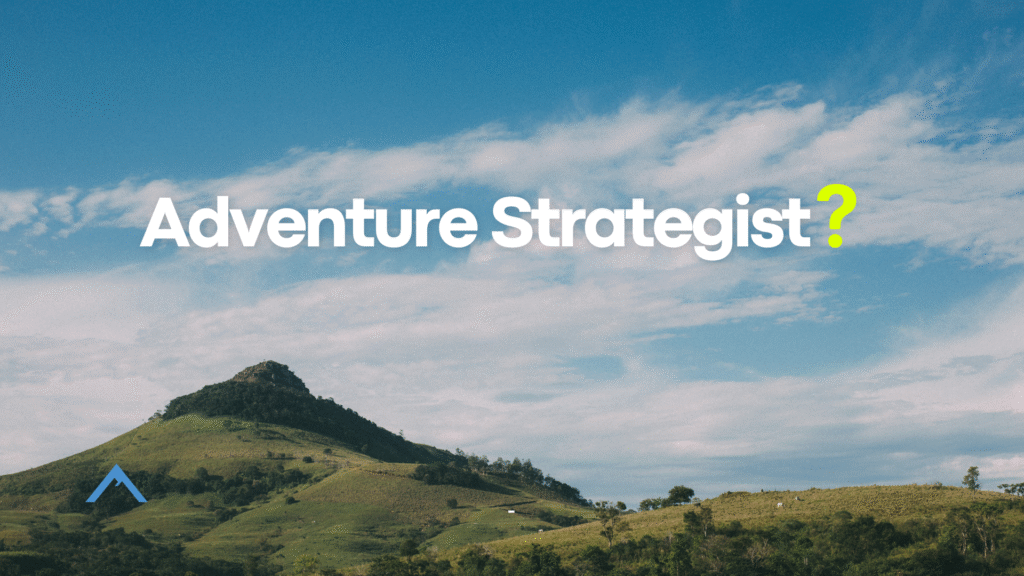
In recent years, the concepts of adventure strategy and adventure therapy have gained significant traction as innovative methods for personal and professional development. While both leverage the principles of adventure to foster growth and resilience, they serve distinct purposes and target different audiences. Understanding these distinctions is crucial for individuals and organizations seeking to leverage the power of adventure in their specific contexts. In this article, we’ll delve into the roles of an adventure strategist and an adventure therapist, exploring their methodologies, applications, and goals.
Defining the Roles
What is an Adventure Strategist?
An adventure strategist, as exemplified by figures like Robert Forto, operates primarily in the business realm. These professionals take the inherent principles of adventure, risk-taking, resilience, teamwork, and adaptability and translate them into actionable strategies for organizations, especially small businesses. The adventure strategist’s goal is to empower business leaders to embrace an adventurous mindset, enabling them to tackle challenges and seize opportunities in a competitive landscape.
Key Functions of an Adventure Strategist:
- Risk Management: Encouraging leaders to view calculated risks as opportunities for growth and development.
- Strategic Planning: Developing clear visions and actionable goals using frameworks like SMART (Specific, Measurable, Achievable, Relevant, Time-bound).
- Team Development: Fostering teamwork through collaborative activities that build trust and cohesion.
- Adaptability: Teaching leaders to navigate uncertainties and pivot effectively in rapidly changing environments.
- Marketing and Branding: Using storytelling and community engagement to differentiate businesses and connect with consumers.
What is an Adventure Therapist?
On the other hand, an adventure therapist operates within the mental health field, integrating outdoor experiences and adventurous activities into therapeutic practices. This approach is rooted in the belief that engaging with nature and participating in adventure-based activities can promote psychological healing and personal growth. Adventure therapy, often utilized for individuals facing emotional or behavioral challenges, leverages the natural environment as a venue for therapeutic interventions.
Key Functions of an Adventure Therapist:
- Clinical Interventions: Using outdoor activities to facilitate conversations and emotional expression.
- Emotional Healing: Creating a safe space for clients to confront personal challenges and develop coping mechanisms.
- Skill Development: Helping clients build self-confidence, resilience, and problem-solving skills through experiential challenges.
- Group Dynamics: Fostering teamwork and communication skills among clients in a supportive environment.
- Nature Connection: Encouraging reconnection with nature as a means to promote mindfulness and well-being.
Target Audiences
Who Benefits from Adventure Strategy?
The target audience for adventure strategists primarily includes business leaders, entrepreneurs, and organizations looking to enhance their performance and drive growth. These professionals are often seeking innovative ways to navigate competitive markets, improve team dynamics, and capitalize on risk for strategic advantage. The methods employed by adventure strategists serve as foundational tools for fostering an organizational culture that embraces change and challenges.
Who Benefits from Adventure Therapy?
Conversely, adventure therapists work with individuals or groups who face emotional or psychological challenges. Their clients may include at-risk youth, individuals experiencing mental health issues, or those looking to improve their overall well-being. This therapeutic approach is especially beneficial for individuals who may struggle with traditional therapeutic settings, as it offers an engaging alternative that incorporates physical activity and experiential learning to promote healing.
Methodologies and Techniques
Adventure Strategist Techniques
An adventure strategist employs a range of techniques drawn from both adventure sports and business principles. Key methodologies include:
- Risk Assessments: Helping leaders identify and evaluate potential business opportunities, encouraging them to take calculated risks.
- Vision Workshops: Facilitating sessions where teams establish collective goals and articulate their vision for the future.
- Team Building Activities: Organizing collaborative challenges that enhance communication, trust, and teamwork among employees.
- Strategic Retreats: Leading off-site expeditions that blend outdoor adventures with strategic planning discussions, creating a unique atmosphere for ideation.
Adventure Therapist Techniques
Adventure therapists utilize a variety of outdoor activities and experiential learning techniques as therapeutic interventions. Key methodologies include:
- Solo Experiences: Encouraging clients to undertake solo challenges to foster self-reflection and personal growth.
- Group Adventures: Utilizing team-based activities, such as rock climbing or hiking, to improve social skills and build community.
- Nature Therapy: Incorporating mindfulness practices and nature immersion to reduce anxiety and promote relaxation.
- Goal Setting and Reflection: Guiding clients in setting personal goals related to their therapy and encouraging reflective practices post-adventure.
Goals and Outcomes
Goals of Adventure Strategy
The primary goal of adventure strategists is to cultivate a courageous mindset among business leaders. By integrating adventure principles into organizational culture, leaders can inspire their teams to embrace innovation, resilience, and adaptability. This strategic approach aims to achieve measurable outcomes, including increased performance, creativity, and team cohesion, ultimately driving business success.
Goals of Adventure Therapy
In contrast, the overarching goals of adventure therapy center on emotional and psychological healing. This approach aims to help individuals navigate personal challenges by fostering resilience, self-awareness, and emotional regulation. The outcomes sought by adventure therapists include:
Improved Mental Health: Clients often experience reductions in symptoms of anxiety, depression, or trauma as they engage in therapeutic activities that encourage emotional expression.
Enhanced Self-Efficacy: By facing physical and psychological challenges outdoors, clients build confidence in their abilities, which often translates into greater self-esteem in other areas of life.
Stronger Social Connections: Group activities in adventure therapy tend to foster bonding and collaboration, enabling individuals to develop their interpersonal skills and sense of community.
Enhanced Coping Strategies: Through shared experiences, clients learn to navigate adversity with the support of therapists and peers, developing strategies that equip them to manage future challenges effectively.
Comparing the Two: Key Differences
While both adventure strategists and adventure therapists utilize the principles of adventure to foster growth, the methods, audiences, and goals of each field differ significantly. Here’s a closer look at the key distinctions:
Primary Focus
Adventure Strategists: The focus is on enhancing organizational effectiveness through mindset shifts and strategic business practices. They employ adventure as a metaphor for navigating business landscapes, teaching leaders how to harness risk and uncertainty strategically.
Adventure Therapists: The focus is on individual well-being and emotional healing. Therapists guide clients through experiential activities that address psychological challenges, helping them to develop coping skills and emotional resilience.
Methodology
Adventure Strategists: Techniques are often structured around workshops, team-building exercises, and strategic planning sessions. Activities may include scenario-based challenges, risk assessment workshops, and facilitated discussions focusing on collective growth.
Adventure Therapists: The therapeutic approach is experiential and often takes place in natural settings. Activities may include hikes, rock climbing, and other physically engaging experiences designed to provoke emotional insight and therapeutic breakthroughs.
Outcomes
Adventure Strategists: Outcomes are measured through business performance indicators, including team efficiency, innovation rates, and overall organizational growth. Success is often patient-participatory and reflects improvements in corporate culture and bottom-line results.
Adventure Therapists: Outcomes are assessed based on personal growth metrics, including emotional healing, improved self-esteem, and the development of effective coping mechanisms. The focus is on qualitative improvements in mental health and personal development.
Educational Background and Training
Adventure Strategists: Typically, these professionals have backgrounds in business management, leadership development, or organizational psychology. They may also have experience in outdoor leadership or adventure sports, which provides them with the unique combination of business acumen and adventurous insight.
Adventure Therapists: Adventure therapists usually have formal training in psychology or social work, often holding advanced degrees and certifications in adventure therapy methods. Their training includes a strong emphasis on mental health, therapeutic techniques, and an understanding of the specific needs of their clients.
Conclusion
The worlds of adventure strategists and adventure therapists may overlap in their foundational philosophy—using adventure as a powerful tool for growth—but they diverge significantly in their methodologies, applications, and target audiences. Businesses seeking to enhance performance and cultivate a culture of resilience can significantly benefit from the insights and strategies of an adventure strategist. Conversely, individuals facing emotional or psychological challenges can find transformative healing through the guidance of an adventure therapist.
By understanding these differences, you can make informed choices about which approach aligns best with your needs, whether you are a business leader looking to invigorate your organization or an individual seeking healing and personal growth. Adventure, in either context, offers a compelling pathway toward achieving your goals, fostering resilience, and ultimately embracing the unpredictable journey of life, both in business and personal development.
As we navigate an increasingly complex world, the principles of adventure, risk-taking, resilience, teamwork, and adaptability can serve as essential guiding forces. Whether you are engaging with an adventure strategist to elevate your business or working with an adventure therapist to heal and grow personally, remember that every adventure presents not only challenges but also incredible opportunities for transformation. Embrace the journey and discover how adventure can lead you to unexpected successes!
To learn more, visit The Adventure Strategist.











